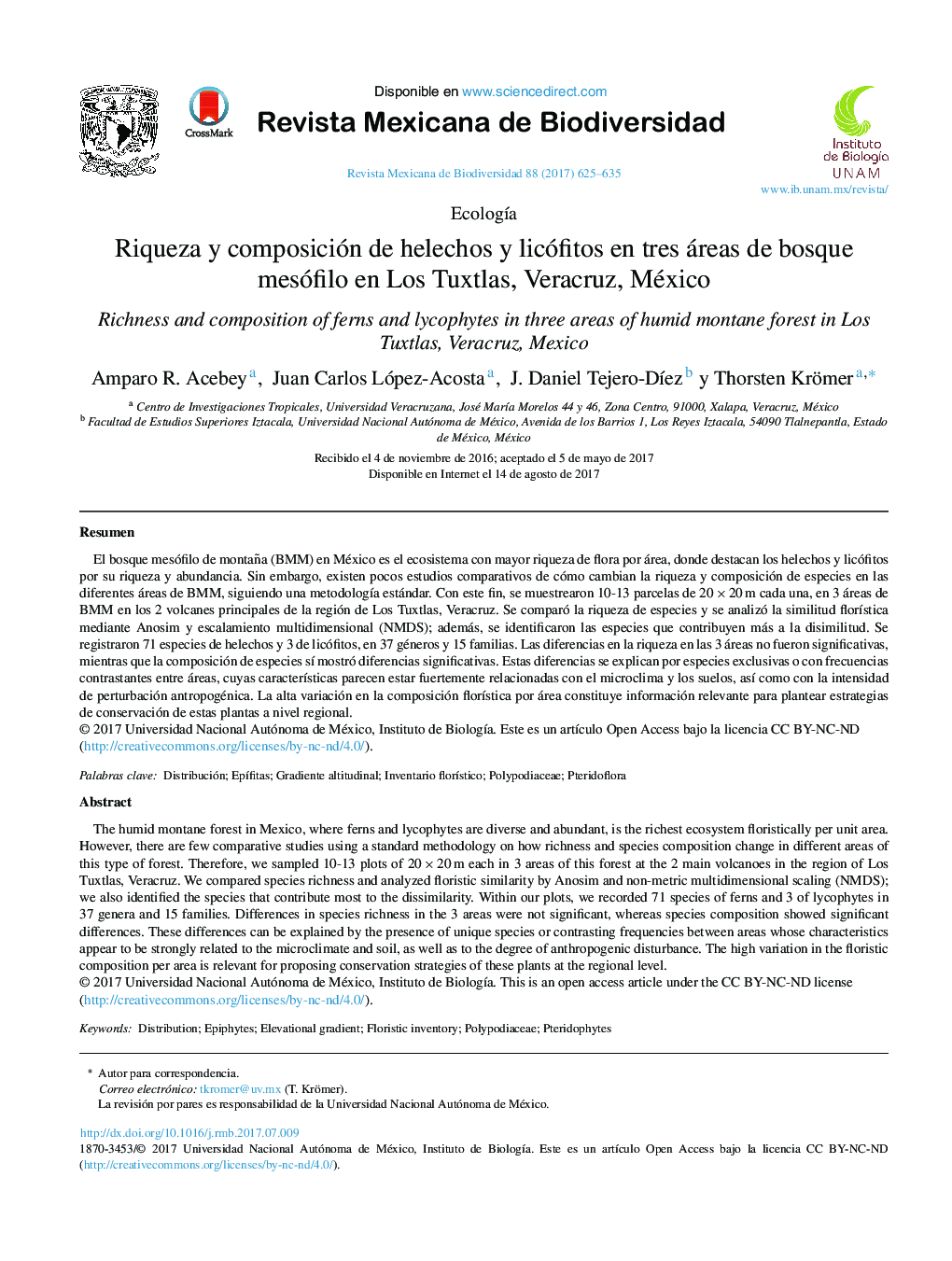| Article ID | Journal | Published Year | Pages | File Type |
|---|---|---|---|---|
| 8867029 | Revista Mexicana de Biodiversidad | 2017 | 11 Pages |
Abstract
The humid montane forest in Mexico, where ferns and lycophytes are diverse and abundant, is the richest ecosystem floristically per unit area. However, there are few comparative studies using a standard methodology on how richness and species composition change in different areas of this type of forest. Therefore, we sampled 10-13 plots of 20Â ÃÂ 20Â m each in 3 areas of this forest at the 2 main volcanoes in the region of Los Tuxtlas, Veracruz. We compared species richness and analyzed floristic similarity by Anosim and non-metric multidimensional scaling (NMDS); we also identified the species that contribute most to the dissimilarity. Within our plots, we recorded 71 species of ferns and 3 of lycophytes in 37 genera and 15 families. Differences in species richness in the 3 areas were not significant, whereas species composition showed significant differences. These differences can be explained by the presence of unique species or contrasting frequencies between areas whose characteristics appear to be strongly related to the microclimate and soil, as well as to the degree of anthropogenic disturbance. The high variation in the floristic composition per area is relevant for proposing conservation strategies of these plants at the regional level.
Related Topics
Life Sciences
Agricultural and Biological Sciences
Animal Science and Zoology
Authors
Amparo R. Acebey, Juan Carlos López-Acosta, J. Daniel Tejero-DÃez, Thorsten Krömer,
